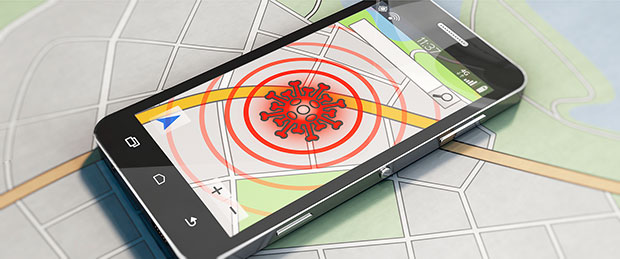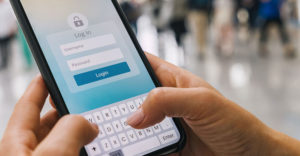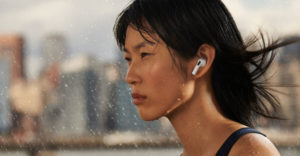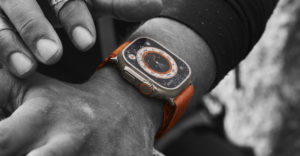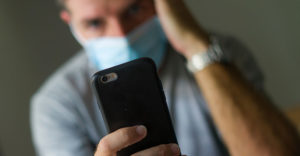Despite the proven effectiveness of smartphone contact-tracing applications in reducing COVID-19 cases and deaths, Americans seem to have little interest in using the programs.
An analysis by the Associated Press released Monday found that only 18 states make those apps available to their citizens and in those locales, only about one in 14 people have utilized the technology, which is used to identify people who have come into contact with a person infected with COVID-19.
Adoption rates in areas using an app based on technology introduced by Google and Apple six months ago are higher, the AP noted, but even in the most successful of those states — Connecticut — only about 20 percent of residents have chosen to activate the software.
The AP added that contact-tracing apps in Europe have fared better, for the most part. In Ireland, for example, more than 25 percent of the population uses a COVID-19 app made by NearForm, which also makes the app used by New York, New Jersey, Pennsylvania and Delaware.
Germany and Great Britain have rates similar to Ireland’s, while Finland has a 45 percent penetration rate. On the other hand, only four percent of France’s population uses a tracing app.
Fragmented Approach
One of the challenges to contact-tracing apps in the United States is the number of them. Some states have their own app, while others don’t have any at all.
“You have a very fragmented approach to the use of apps in different parts of the country,” explained Andrew T. Chan, a professor in the department of immunology and infectious diseases at the Harvard T.H. Chan School of Public Health in Boston.
“This fragmentation has resulted in no one approach being predominant, which makes it a challenge for these apps to identify people with COVID and their contacts,” he told TechNewsWorld.
Adding to the problems created by fragmentation is the absence of coherent guidance from Washington. “We haven’t had a federal government response,” said Jim McGregor, founder of and principal analyst at Tirias Research, a high-tech research and advisory firm in Phoenix.
“So we’ve got all these piecemeal solutions, and they don’t work very well,” he told TechNewsWorld.
Privacy Concerns
When Google and Apple announced their tool for creating contact-tracing apps, it appeared to be a promising development, but the technology hasn’t lived up to that promise yet.
“One of the benefits of having an operating system duopoly is that you should be able to roll this out to virtually the entire market more easily than if there were half a dozen operating systems to contend with,” observed Ross Rubin, the principal analyst with Reticle Research, a consumer technology advisory firm in New York City.
“Yet,” he told TechNewsWorld, “there’s been a reluctance to embrace it due to a number of behaviors and attitudes, ranging from apathy to denial.”
“Now, the time for adoption may be dwindling as we get closer to distribution of a vaccine,” he added.
People may also be wary of using the apps for privacy considerations. “There’s a lot of reticence about giving out personal information because of what private companies can do with that information,” said Shreela Sharma, professor of epidemiology and disease control at the University of Texas School of Public Health in Houston.
“People are tired of information gathered for one purpose being used for other things,” she told TechNewsWorld. “That’s a problem because we need people to share information for their own protection.”
Lack of Awareness
Adoption of contact-tracing apps may also be suffering from an awareness problem. Broad adoption of applications depend on viral distribution, which depends on people downloading a program because their friends are doing it, Rubin explained.
Contact-tracing apps lose some of that power of influence because of their need to protect anonymity and privacy, he said.
A COVID-19 symptoms app from Johns Hopkins Bloomberg School of Public Health in Baltimore has had adoption problems similar to those of contact tracers, noted Michael Desjardins, a researcher in statistics and epidemiology at the school.
In addition to problems gaining visibility, the Hopkins COVID Control app requires daily interaction with the software, which requires a lot of commitment from users.
“We want information entered every day to track symptoms over time in both healthy and unhealthy people, which would help us identify hot spots of respiratory illness,” Desjardins told TechNewsWorld.
“We’ve had trouble reaching a national audience,” he said. “It’s been very localized. Our highest number of users, for example, is in the D.C.-Virginia-Maryland area.”
Politicization
Among all the factors creating adoption friction, politics may be one of the most significant.
“We’re politicizing a virus that is having direct impacts on public health outcomes,” Desjardins said.
“There’s been a lag in countermeasures by the federal government to tackle this and as a result, we’ve seen a lot more people die that should have,” he observed.
“Politicizing the virus and the measures to combat it is putting a huge wall in front of what we’re trying to do as scientists,” he added.
Rubin maintained, though, that politicization is an indirect factor influencing the adoption of contact-tracing apps.
“Even in communities where there’s been a good response to public health urgings to take measures to stem the spread of the virus, activation of these apps has been relatively low,” he said.
Sharma added that public health issues are always political. “We’re talking about decisions about the health of the public that are made by politicians,” she explained.
“This is no different,” she continued, “but because this is a pandemic, we see the politicization at a much bigger level.”
Google Study
While adoption of contact-tracing apps remain low, that may not be such bad news. Recent research by Oxford University’s Nuffield Department of Medicine and Google indicate that the programs can still be effective even at low uptake rates.
According to the researchers, all levels of exposure notification uptake levels in the U.K. and the U.S. have the potential to meaningfully reduce the number of coronavirus cases, hospitalizations and deaths across the population.
They noted that in Washington State, for example, a well-staffed manual contact tracing workforce combined with 15 percent uptake in a contact-tracing app could reduce infections by 15 percent and deaths by 11 percent.
The researchers’ findings show how the apps should be used.
“They aren’t a panacea by any means,” Chan said. “These apps are designed to be a complement to other strategies.”
“They can be an important adjunct to widespread testing and manual contact tracing,” he added.

